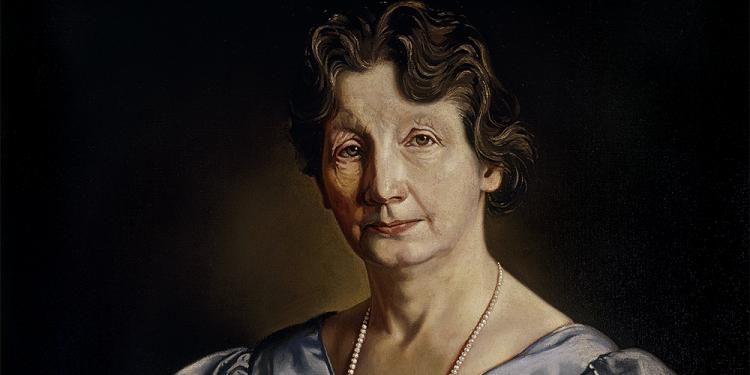Portrait of William Shakespeare, 1610. Possibly painted by John Taylor.
There are several references to the word ‘bandy’ in the works of English playwright William Shakespeare, including one in Romeo and Juliet when Romeo, trying to stop a fight between Tybalt and Mercutio, declares:
“The Prince expressly hath forbidden bandying in Verona streets”.
Some commentators have attributed this reference to a game called bandy, which they explain as being a form of hockey because it involves the use of a curved stick and a ball. This might lead to the conclusion that Shakespeare wrote about hockey!
This article briefly explores the origins of bandy, a thriving sport which is unrelated to hockey.
Bandy In The 12th Century And In The 19th Century
William Fitzstephen was a cleric and administrator in the service of Thomas Becket, being present when the Archbishop of Canterbury was murdered in 1170. He wrote a description of London in the 12th century, including a section titled “Sports and Pastimes of old Time used in this City”.
There have been differing translations of this description from the original Latin, one of which was by the celebrated historian and Antiquarian, John Stow (sometimes ‘Stowe’), who wrote A Survay of London in 1598.
Stow’s translation of part of Fitzstephen’s description included the following:
“Every year also at Shrove Tuesday, that we may begin with children’s sports … after dinner, all the youths go into the fields to play at the ball. The scholars of every school have their ball, or baton, in their hands.”
In his celebrated book The Sports and Pastimes of the People of England, first published in 1801, Joseph Strutt presented a chapter on games with a ball in which he translated Fitzstephen’s description differently, as follows:
“Annually upon Shrove Tuesday, they go into the fields immediately after dinner, and play at the celebrated game of ball; every party of boys carrying their own ball.”
Strutt discussed this passage at length, and concluded:
“There are many games played with the ball that require the assistance of a club or bat, and probably the most ancient among them is the pastime now distinguished by the name of goff … In the reign of Edward the Third [1327 to 1377], the Latin name Cambuca was applied to this pastime, and it derived the denomination, no doubt, from the crooked club or bat with which it was played; the bat was also called a bandy, from its being bent, and hence the game is frequently written in English bandy-ball.”
Strutt provided an engraving, reproduced below, which he described as “two figures engaged at bandy-ball, and the form of bandy as it was used early in the fourteenth century”. His engraving was derived from a manuscript book of prayers, beautifully illuminated and written about that time, which is held by the Bodleian Library, Oxford.
 |
| An engraving of bandy, after the manuscript Book of Prayers, 14th century. |
Bandy today
Today, Bandy is a game with similarities to ice hockey which is especially popular in Scandinavian countries. It is played in an ice-rink with a ball rather than a puck. A BBC archived web page from 2014 included the following paragraphs:
“We may not be familiar with it, but bandy is certainly not a new game. Records dating back to 1813 reveal that the village of Bury-on-Fen in Cambridgeshire had a bandy team that were unbeaten for a hundred years. And it is thought that Shakespeare was referring to the same game in Romeo and Juliet.
“In its earliest incarnation the game had no set rules, and different versions were played by different groups, agreeing on the rules before they started each individual game. It wasn’t until Charles Tebbutt, of the Bury Fen Bandy Club, set out the official rules that the game of bandy was properly recognised.
“The Norris Museum in St Ives, Cambridgeshire, has a copy of the Bandy Code of Rules, developed in 1882. As an example … rule number 11 states: If you drop your stick during a game of bandy then any of your opponents is entitled to pick it up and throw it away. “So it’s that type of game,” says Bob [Bob Burn-Murdoch, who is (or was) curator of the Norris Museum]. ‘Not quite as elegant and gentlemanly as ice hockey.’”
A lot of the games would have been organised by the local gentry, but the workers would have been encouraged to take part in order to keep them out of the pub! So, all classes were involved in playing bandy. There was a famous exhibition match at Windsor Castle in 1853 in the presence of Queen Victoria, with Prince Albert playing as one of the goalkeepers!”
Once the rules of the game were established, Charles Tebbutt decided it was time to introduce the rest of northern Europe to the sport, and the first international bandy match took place in 1891 between England’s Bury Fen Club and Haarlem in the Netherlands. From there, Tebbutt took the game to Sweden, and the rest is history.”
Conclusion
Bandy in ancient times was the name of a club used to hit a ball rather than being the name of a sport. ‘Bandying’ as used by Shakespeare may have referred to hitting a ball with a bandy in a game, the nature of the game not being known.
Goff (or golf) in the 19th century was sometimes known as bandy-ball, but that name went out of popular use. A game played on ice with a ball in an ice rink, which became known as bandy, was created in the Fens of eastern England and has become popular in Scandinavian countries today.
Mike Barford









